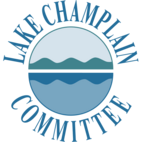Lake Look: Champlain Rain Disdain
How Climate Change, Precipitation, and Soil Interact to Create Water Quality Challenges
One of the major impacts of climate change in the Lake Champlain Basin is precipitation—it’s getting wetter. According to a recent presentation by soil scientist Dr. Joshua Faulkner through the Vermont Department of Environmental Conservation’s Clean Water Initiative Program “Agriculture, Climate Change, and Water Quality,” average annual rainfall has increased more than four inches over the course of the past century in the Northeast as a whole. If you’re a farmer, this figure does not come as a major red flag—100 years is a lot of time to adapt to a change of that scale, and farmers tend to be highly adaptable people.

However, the increases in rainfall specifically in Vermont are actually much higher than four inches in 100 years: it ranges from five inches in Southeastern VT, to seven inches in Western VT, all the way to nine inches in Northeastern VT over the course of the past 30 years. An annual increase in rainfall of nine inches is about 25% of the total rainfall that region gets, and 30 years is a lot less time to adjust to a changing environment. Patterns of precipitation are also changing. Over the past 30 years, there has been a nearly 75% increase in “Very Heavy Precipitation Events” (rainstorms with more than an inch of rainfall in 24 hours). A similar trend can be observed in New York. According to the New York Department of Environmental Conservation, precipitation increases are one of the major impacts of climate change that New York is experiencing, with more frequent and intense rain events exacerbating flooding throughout many parts of the state.
There are many implications from more rain and more intense rainstorms, but one major problem associated with this is erosion. Topsoil that may have taken generations to build can be washed away in a single heavy rain event. According to a study from Nearing et al., erosion increases at a rate 1.7 times the rate of average annual rainfall. Much of Vermont and upstate New York’s farmland is located in fertile river valleys and floodplains, putting them at high risk of soil loss from erosion. The rise in “Very Heavy Precipitation Events” is the major trigger for increased erosion.
All of this eroded soil has to go somewhere. Rivers carry the sediment-heavy runoff downstream to waterbodies like Lake Champlain. Much of this sediment is rich in phosphorus, the chemical culprit that drives cyanobacteria blooms. Cyanobacteria thrive off this nutrient, making it one of the greatest water quality challenges facing Lake Champlain. Blooms are also aided by warmer waters, which is why we tend to see them more in the hottest parts of the summer. With climate change driving both soil erosion and runoff from rainfall, as well as warmer waters, we may be looking at more cyanobacteria blooms in our future.

There are, however, ways to prevent the excess phosphorus from entering our waterways, and much of it starts with soil. Soil is not just dirt, but a complex living system, and many of the measures taken to prevent runoff have to do with simply maintaining a healthy soil ecosystem. For farms, Dr. Faulkner highlighted three soil management approaches to reduce agricultural runoff: maintain constant soil cover, build organic matter, and reduce disturbance to preserve soil structure. Constant soil cover refers to keeping bare soil to an absolute minimum year-round by planting cover crops or using straw. Building organic matter and avoiding disturbance both help keep soil microorganisms fed and functional. This prevents runoff by making the soil more capable of infiltration—rain soaks into the healthy soil rather than soil being stripped away by it. Cover crops and other types of soil cover accomplish the same thing: increased infiltration means less runoff. These simple soil management practices can make a big difference in water quality.
Not a farmer? Consider your own land--be it a few acres in the Adirondacks or a few square feet in Burlington –the same management practices apply. Anyone who owns or has influence over a piece of land can play a part. One strategy that has benefits beyond soil infiltration is to plant native plant species, particularly those that attract pollinators. This holds soil in place to prevent erosion and reduces the amount of exposed bare soil, all while supporting native pollinators and the ecosystem as a whole. Consider forgoing a grass monoculture lawn altogether or converting portions of lawn to native plants and shrubs, as this slows the flow of water more than just grass does. If you do have a grass lawn, keep lawnmower blades to a minimum of three inches to increase the amount of water your grass can soak up. If for some reason bare soil is unavoidable, lay a layer of mulch on top to keep soil from washing away with the rain. New York and Vermont have banned the use of non-agricultural fertilizer that contain phosphorus—with the exception of new lawns and when deemed necessary by a soil test. (When buying fertilizer for your property make sure the middle number on the bag is “0” indicating it doesn’t contain phosphorus.) Combined with following the tips to foster soil that retains water, these actions can reduce the phosphorus fuel for cyanobacteria blooms from entering Lake Champlain.
Lake Look is a monthly natural history column produced by the Lake Champlain Committee (LCC). Formed in 1963, LCC is a bi-state nonprofit that uses science-based advocacy, education, and collaborative action to protect and restore water quality, safeguard natural habitats, foster stewardship, and ensure recreational access. You can join, renew your membership, make a special donation, or volunteer to further our work.
